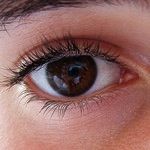
Contact Details:
EngNet - Engineering Network
11121 Carmel Commons Blvd.
Charlotte
NC
28226
United States of America
Tel: +01 704 5413311
Fax: +01 704 9430560
Send Enquiry | Company Information

Engineering a Bionic Eye
Service News Friday, August 31, 2012: EngNet - Engineering Network
Richard Dawkins is fond of citing the German phyisologist Hermann von Helmholtz (1821-1894) who complained of the eye that if a human engineer designed such an organ -- with its counterintuitive wiring and virtually unnoticeable blind spot -- he'd have sent the engineer away, disgusted with the incompetence of the plan.
With 40 million blind people in the world today, it would be a wonderful thing if some modern bioengineer were to come up with a design for a bionic eye capable of restoring vision and replacing, as needed, our own natural organ of sight. Yet as a bioengineering problem, developing a bionic eye has proved to be frustratingly difficult, as I noted here earlier.
In this context a headline out of Australia this week -- "'World-first' bionic eye implanted in human patient" (Agençe France-Presse) -- catches your attention. It sounds like scientists have finally solved the problem of designing a working visual prosthesis. Great! How exciting, right? Um, not so fast. Unfortunately as you read the article the impressiveness of the achievement, and the hope it holds out to the blind, have to be adjusted sharply downward with almost every paragraph.
The lucky recipient of the bionic eye is Dianne Ashworth, who suffers from degenerative retinitis pigmentosa. The article first calls it the "'world-first' bionic eye prototype." In the next paragraph it's demoted to an "early prototype." We then learn that what's called an "incredible experience" for Ms. Ashworth was no more than perceiving some flashing lights.
"I didn't know what to expect, but all of a sudden, I could see a little flash -- it was amazing," she said in a statement.
"Every time there was stimulation there was a different shape that appeared in front of my eye."
You read on and find that even this can be done for her only in a lab, so outside the lab Ms. Ashworth is back to being blind.
The team with government-funded Bionic Vision Australia hopes to improve on the current model, which employs 24 electrodes. They are
working towards a "wide-view" 98-electrode device that will provide users with the ability to perceive large objects such as buildings and cars, and a "high-acuity" 1,024-electrode device.
Patients with the high-acuity device are expected to be able to recognise faces and read large print, and BVA said it would be suitable for people with retinitis pigmentosa and age-related macular degeneration.
So anything remotely like achieving normal vision lies far in the future. The article concludes by quoting researcher David Penington who says the device so far has "fulfilled our best expectations, giving us confidence that with further development we can achieve useful vision." Meaning that Ms. Ashworth, when she can swing by the lab, currently enjoys vision that is not "useful" to her.
That is strange since Hermann von Helmholtz, going back more than a century and a half, talked like he could have done a better job in designing an eye than nature or nature's designer actually did. Despite Dawkins's admiration, maybe the guy was just an arrogant ass, after all.
Article Source: http://www.evolutionnews.org/2012/08/engineering_a_b063771.html
Image: Dan Foy/Flickr.
